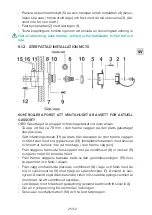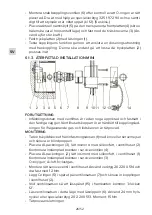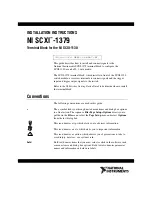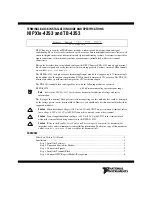
14/52
EN
6.2. TEST AFTER THE CARRYING OUT OF INSTALLATION
6.2.1. TEST OF FUNCTIONALITY AND LEAKAGE TEST AFTER THE END
OF INSTALLATION
•
For the test of functionality and leakage test use the gas for which the
terminal unit is intended or the medical air or nitrogen with pressure as
specified in Chapter 2.
•
Test the connectivity of counterparts of all installed terminal units, for
variants with the positioning of a counterpart of the quick connector
verify the right orientation of the quick connectors.
•
Test the through-pass capacity of the terminal unit for presence of gas
on the outlet.
•
Test the general tightness of the terminal unit and with all accessories
in the state with connected as well as disconnected counterparts of the
quick connectors. The leakage must not exceed 0.296 ml/min in any of
the described conditions (this corresponds to a change in the pressure
0.03 kPa.l/min for the leakage test for a pressure drop).
•
Clean the terminal unit from possible impurities and check the integrity
and presence of all labels and markings.
Any other conditions of installation and procedures for testing after
installation are governed according to the applicable standard “EN ISO
9170-2” and EN ISO 7396-2".
If any leakage or another defect of the terminal unit is discovered, use the
procedure described in Chapter 9.3 and return the unit for the carrying
out of the servicing activity.
7. OPERATIONS
7.1. BEFORE USE
7.1.1. PREPARATION FOR USE OF THE TERMINAL UNIT
•
Check if there is visible external damage to the terminal unit (including
the labels and marking). If it shows signs of external damages, avoid its
use and identify its status.
•
Visually check if the product is contaminated; and if needed, use the
cleaning procedure detailed in this Manual.
•
Check the unit for leakage (e.g. by listening for leakage that can be
heard).
Terminal unit can be used only for the gas specified on the button. Never
try to use it for different type of gas.















































